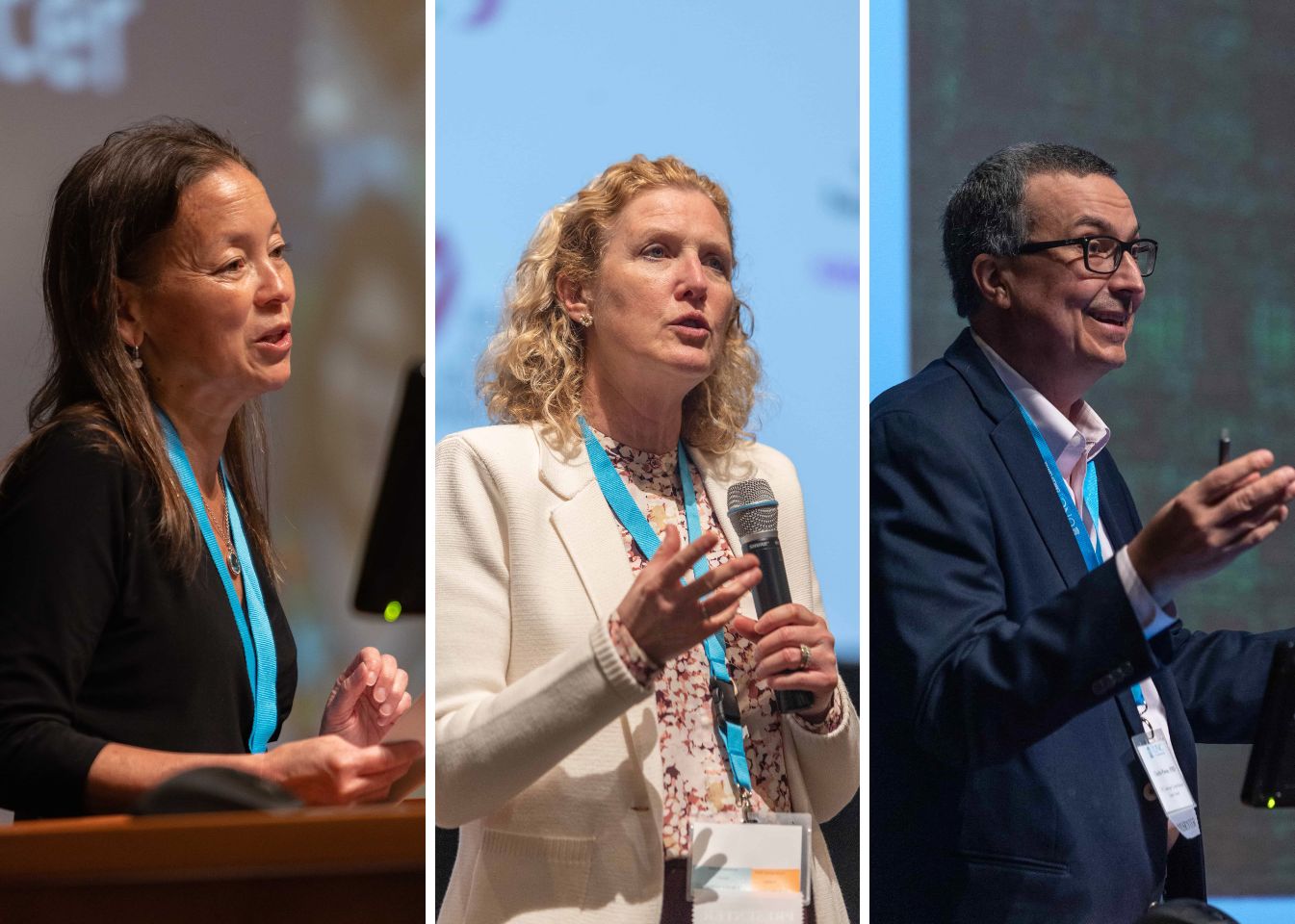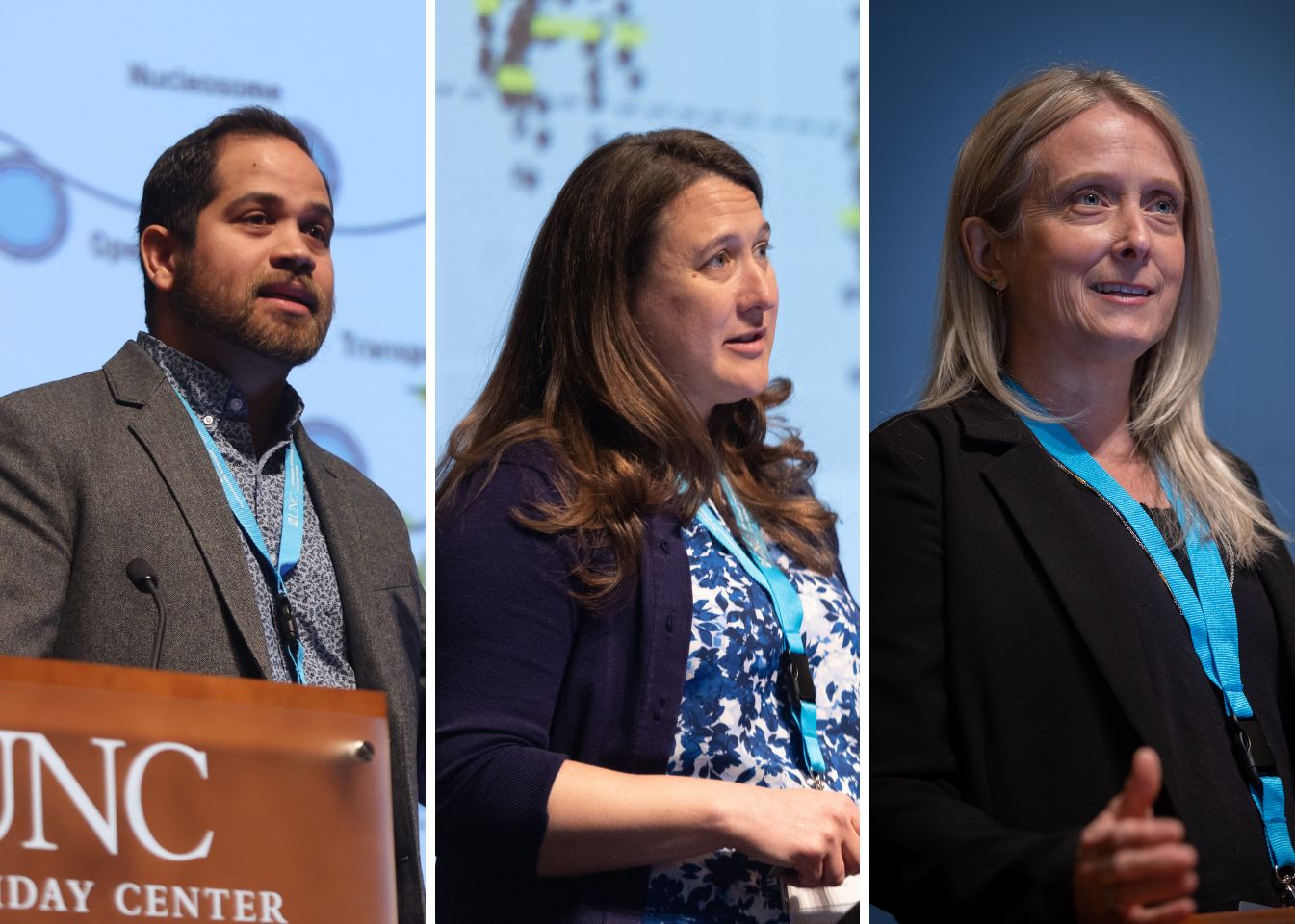Leading investigators offer ‘highly scientific, but patient-focused’ talks on women’s cancers at symposium
����ý Lineberger’s 46th annual Scientific Symposium on April 24-25 brought together more than 350 people in person and virtually to hear talks on the latest research on women’s cancers.

The day-and-a-half meeting was chaired by ,��, and , and featured 15 presentations on women’s cancers, with a focus on breast, endometrial and ovarian cancers.
“This is the first symposium that was designed around a cancer type itself, rather than biologic and preclinical processes,” Carey said, adding that she, Bae-Jump and Perou were intentional in this approach to bring together research insights from the lab, the clinic and the community. “This made for a highly scientific, but patient-focused symposium.”
Perou said this approach made it possible to cover a broad range of disciplines and topics that were all relevant to women’s health.
“These topics ranged from molecular findings, to new possible biomarkers of treatment response, to new prevention strategies, to new clinical trials with exciting novel drugs,” Perou said. “We all got exposed to a huge diversity of topics that made us all think deeply about what we heard, and which will certainly influence our future research.”
The symposium featured talks by presenters from outside ����ý: Diego Castrillon, MD, PhD, University of Texas – Southwestern Medical Center; Jose Conejo-Garcia, MD, PhD, Moffitt Cancer Center; Melissa Davis, PhD, Weill-Cornell School of Medicine; David Huntsman, MD, University of British Columbia; Sandra McAllister, PhD, Brigham & Women’s Hospital; Daniela Matei, MD, Northwestern School of Medicine; Nicholas Navin, PhD, University of Texas MD Anderson Cancer Center; Olufunmilayo I. Olopade, MD, FACP, University of Chicago; and Jeffrey Rosen, PhD, Baylor College of Medicine.

There were also talks by ����ý Lineberger members: ,��, and , as well as Bae-Jump, Carey and Perou.
For the second year, the symposium used a hybrid in-person/online format, which has expanded the meeting’s reach to include participants from North Carolina and across the United States. There were also participants from more than a dozen academic, medical and governmental institutions outside North Carolina, including Michigan State University, University of Notre Dame, University of Chicago, University of Pennsylvania, University of Pittsburgh, National Institutes of Health, Dana-Farber Cancer Institute, and MD Anderson.
This article originally appeared in .
